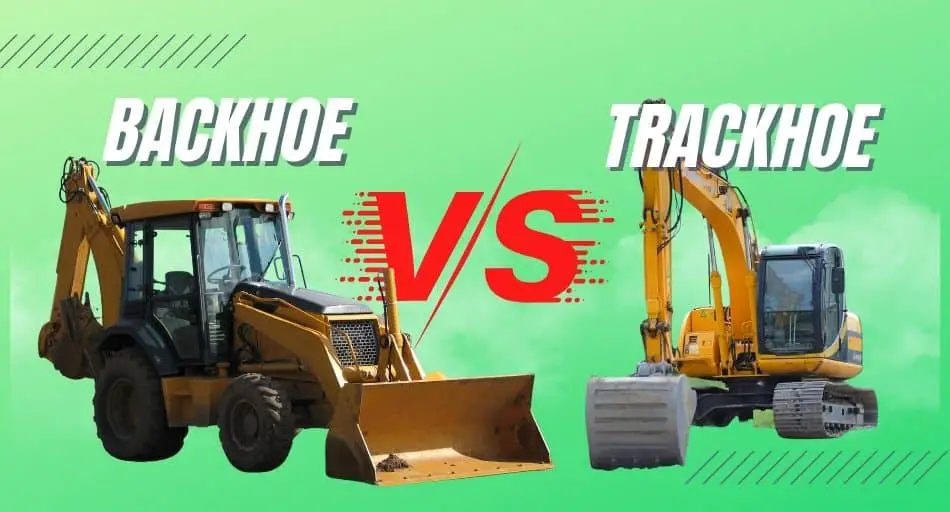Have you ever wondered why most tractor-trailers on the road are 53 feet long? As a curious person, I did some research on this topic and found some interesting information.
The federal government has mandated that the trailer on a five-axle semi-truck that travels on the interstate and federally maintained access roads cannot be less than 53 feet. This is the most important sizing mandate for tractor-trailers in the United States.
However, some states allow smaller trailers on state-funded roads and longer trailers on all roads.
Secondly, the trucking industry adopted the 53-foot trailer as the de facto standard in shipping due to regulations that limited overall vehicle length to 75 feet.
The 53-foot trailer allows for 13 rows of pallets plus an extra foot so that the door will close. This makes it easier to load and transport goods, and it also helps reduce transportation costs.
Regulations and Standards

Length Restrictions
As I was researching why tractor-trailers are 53 feet long, I found out that the length of these trailers is regulated by federal and state laws.
According to the Federal Highway Administration, semitrailers up to 53 feet in length may operate without a permit by conforming to a kingpin-to-rearmost axle distance of 40 feet 6 inches.
However, it’s important to note that each state has its own regulations when it comes to the lengths allowed for a tractor-trailer. For example, some states allow vehicles with trailers up to 59 feet long on non-federal roads.
Safety Standards
Safety is a top priority when it comes to tractor-trailers, and that’s why there are strict safety standards that these vehicles must meet.
For example, the National Highway Traffic Safety Administration has established regulations for the design and construction of commercial motor vehicles, including tractor-trailers.
These regulations cover everything from lighting and reflective materials to brake systems and tires. In addition to federal safety standards, many trucking companies have their own safety programs in place.
These programs often include driver training, regular vehicle inspections, and strict rules for hours of service. By following these safety standards, trucking companies can help ensure that their drivers and other motorists on the road stay safe.
Overall, the regulations and standards surrounding tractor-trailers are in place to promote safety and efficiency on our nation’s highways.
While these regulations can sometimes be complex and vary from state to state, they play an important role in keeping our roads safe for everyone.
READ ALSO: A Beginner’s Guide to Tractor Tire Sizing and Measurements
Efficiency and Cost

Fuel Efficiency
I’ve also learned that one of the main reasons why tractor-trailers are that long is to improve fuel efficiency.
According to a study by the International Council on Clean Transportation, longer trailers can improve fuel efficiency by up to 25% compared to shorter trailers.
This is because longer trailers can carry more cargo, which means fewer trips are needed to transport the same amount of goods.
Additionally, longer trailers have a lower wind resistance, which reduces the amount of fuel needed to power the truck.
Shipping Costs
Another reason is shipping costs. Longer trailers can carry more cargo, which means that the cost per unit of cargo is lower.
For example, if a company needs to transport 100 units of cargo, it would be more cost-effective to transport them in one 53-foot trailer than in two 30-foot trailers.
Additionally, longer trailers can also reduce the number of trucks needed to transport the same amount of goods, which can further reduce shipping costs.
In conclusion, the length of tractor-trailers is not arbitrary. Longer trailers are designed to improve fuel efficiency and reduce shipping costs.
By carrying more cargo and reducing the number of trips needed to transport goods, longer trailers can help companies save money and reduce their environmental impact.
History of Tractor Trailers

Tractor trailers, also known as semi-trucks, are a vital component of the transportation industry. These trucks have been around for over a century and have undergone significant changes over the years.
Early tractor-trailers were much smaller and less powerful than today’s models. They had a maximum payload of around 5,000 pounds and were primarily used for local deliveries.
As highways and roads improved, the need for larger and more powerful trucks grew.
In the 1950s, the length of tractor-trailers was limited to 45 feet due to safety concerns. However, in the 1980s, the Surface Transportation Assistance Act allowed for the use of 53-foot trailers on the National Highway Network.
This change in regulations allowed for more cargo to be transported at once, resulting in more efficient shipping.
Today, the 53-foot trailer has become the standard in the trucking industry, with some states allowing for even longer trailers.
These trailers have room for up to 13 rows of pallets, making them ideal for transporting large amounts of goods over long distances.
Overall, the history of tractor-trailers is a story of innovation and adaptation. As the transportation industry continues to evolve, we can expect to see even more changes in the design and capabilities of these essential vehicles.
READ NEXT: Who Buys Stolen Catalytic Converters: A Look at the Black Market
Advancements in Technology

Trailer Design
I have seen many changes in the design of trailers over the years. One of the most significant changes is the length of the trailers.
As technology has advanced, trailers have become longer, from 48 feet to 53 feet, allowing them to carry more goods.
Additionally, trailers are now made with lighter materials, such as aluminum, which reduces their weight and increases their payload capacity.
Another advancement in trailer design is the use of aerodynamics. Many trailers now have a sleek, tapered design that reduces wind resistance, making them more fuel-efficient.
This not only saves money on fuel costs but also reduces the carbon footprint of the transportation industry.
Truck Design

The truck design has also undergone significant changes over the years. Trucks are now equipped with more advanced technology, such as electronic control systems, which help drivers operate vehicles more efficiently.
These systems can optimize the engine’s performance, monitor fuel consumption, and even help with navigation.
Additionally, trucks are now designed with safety in mind. Many trucks are equipped with advanced safety features, such as lane departure warning systems, forward collision warning systems, and automatic emergency braking.
These features help prevent accidents and keep drivers safe on the road. In conclusion, advancements in technology have had a significant impact on the design of trailers and trucks.
These advancements have allowed for longer trailers, lighter materials, and more fuel-efficient designs. Trucks are now equipped with advanced technology and safety features to keep drivers safe on the road.
Conclusion
After conducting research and analyzing the information, I have come to the conclusion that the 53-foot trailer has become the industry standard for tractor-trailers due to a combination of federal regulations and the desire to maximize shipping efficiency and cost savings.
While state laws may vary, it is important for carriers to comply with them to avoid any legal issues and ensure the safe transportation of goods.

Jack is the owner, chief editor, and senior writer of this website.
Machinery, engines, and farming have always been a passion of his since he was a young boy. Growing up on a small farm in rural America, he learned the value of hard work and dedication from an early age.
After completing his degree in Engineering, he decided to follow his dream and became a farmer in 2009.
Since then, he has gained a wealth of knowledge and experience in the field. He has grown a variety of crops, tended to farm animals, and worked with all sorts of farming machinery. Continue reading…





